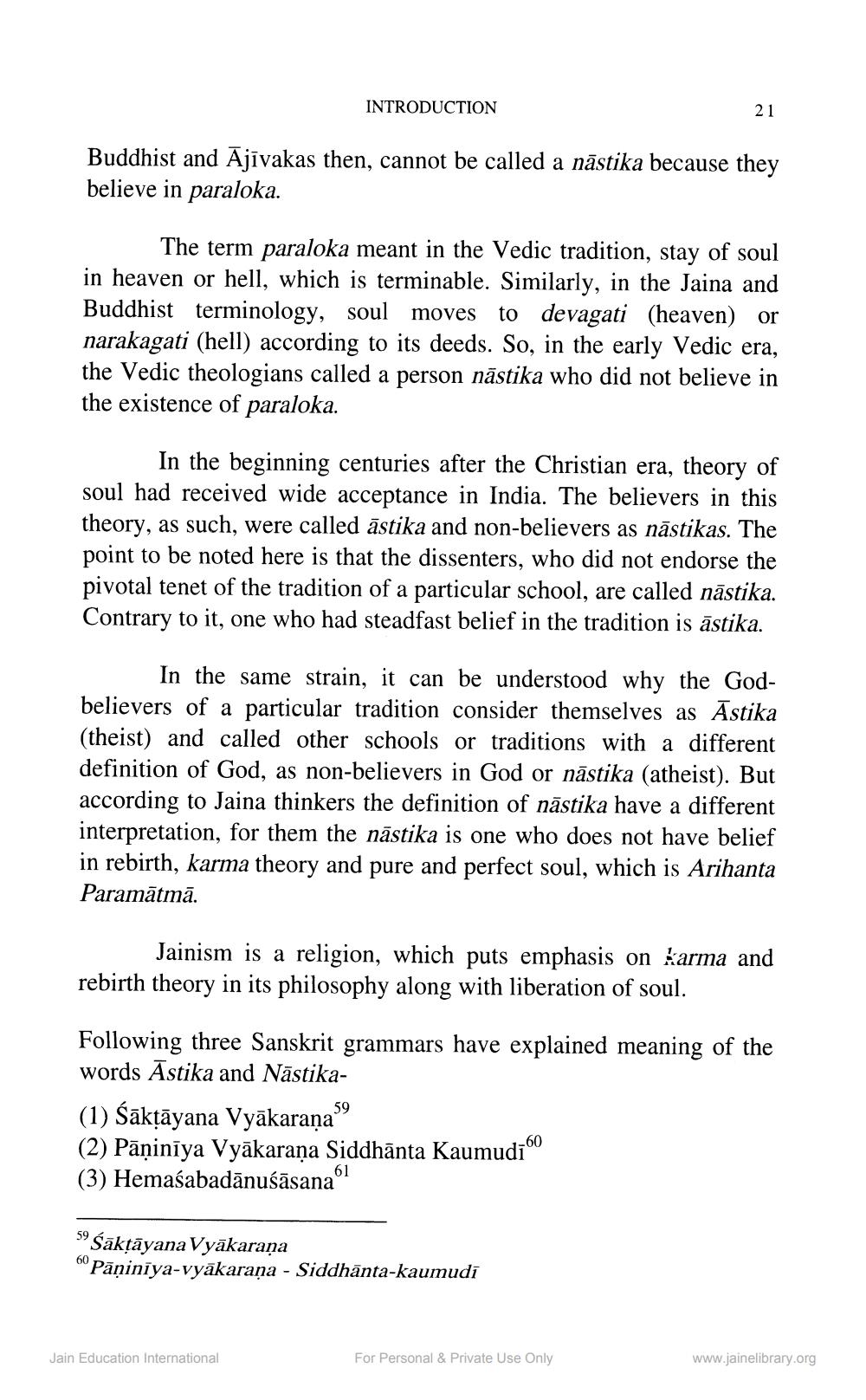________________
INTRODUCTION
21
Buddhist and Ajīvakas then, cannot be called a nāstika because they believe in paraloka.
The term paraloka meant in the Vedic tradition, stay of soul in heaven or hell, which is terminable. Similarly, in the Jaina and Buddhist terminology, soul moves to devagati (heaven) or narakagati (hell) according to its deeds. So, in the early Vedic era, the Vedic theologians called a person nāstika who did not believe in the existence of paraloka.
In the beginning centuries after the Christian era, theory of soul had received wide acceptance in India. The believers in this theory, as such, were called āstika and non-believers as nāstikas. The point to be noted here is that the dissenters, who did not endorse the pivotal tenet of the tradition of a particular school, are called nāstika. Contrary to it, one who had steadfast belief in the tradition is āstika.
In the same strain, it can be understood why the Godbelievers of a particular tradition consider themselves as Āstika (theist) and called other schools or traditions with a different definition of God, as non-believers in God or nāstika (atheist). But according to Jaina thinkers the definition of nāstika have a different interpretation, for them the nāstika is one who does not have belief in rebirth, karma theory and pure and perfect soul, which is Arihanta Paramātmā.
Jainism is a religion, which puts emphasis on karma and rebirth theory in its philosophy along with liberation of soul.
Following three Sanskrit grammars have explained meaning of the words Āstika and Nāstika(1) Śāktāyana Vyākarana" (2) Pāṇinīya Vyākaraṇa Siddhānta Kaumudio (3) Hemaśabadānuśāsana"
59 Śāktāyana Vyākaraņa Pāniniya-vyākarana - Siddhānta-kaumudi
Jain Education International
For Personal & Private Use Only
www.jainelibrary.org




